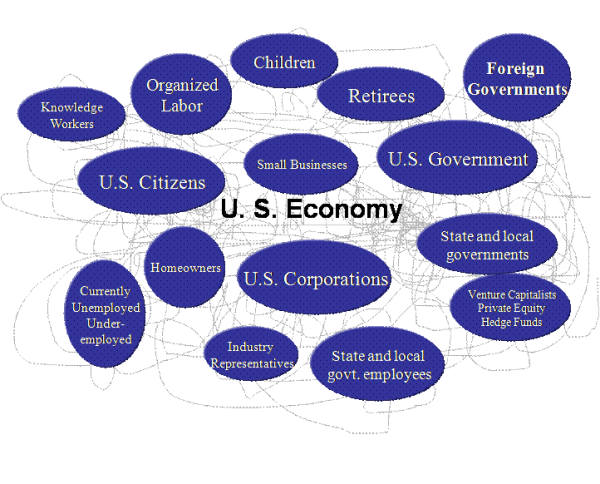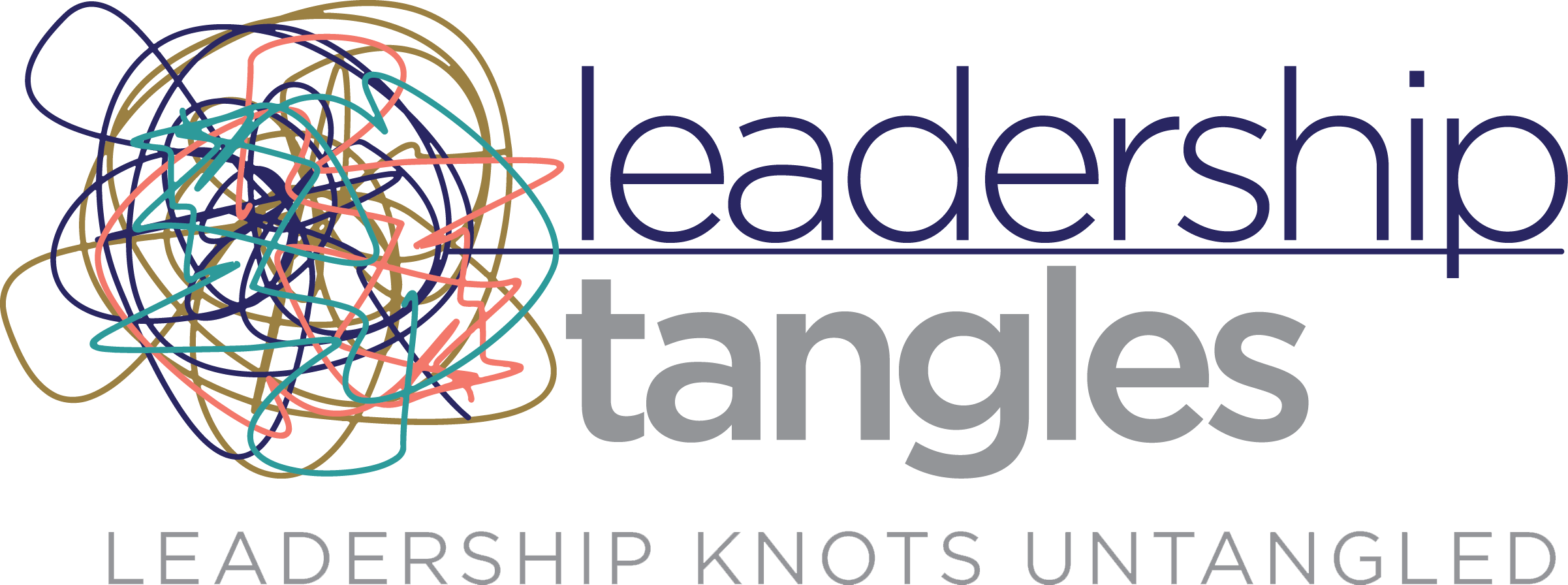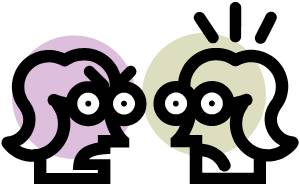 I recently conducted a rigorous research study on how key stakeholders in an organization make sense of a seemingly intractable complex challenge exacerbated by human dynamics issues. The current economic mess is a wicked tangle because it involves multiple stakeholders, each with a different view of the situation. Each stakeholder not only has their own interests, but also a different idea of how the situation should be solved. The photo above gives a snapshot of the myriad of stakeholders enmeshed in this wicked tangle. When faced with wicked corporate tangles, it is helpful to draw a picture of all of the stakeholders, and identify their positions and underlying interests.
I recently conducted a rigorous research study on how key stakeholders in an organization make sense of a seemingly intractable complex challenge exacerbated by human dynamics issues. The current economic mess is a wicked tangle because it involves multiple stakeholders, each with a different view of the situation. Each stakeholder not only has their own interests, but also a different idea of how the situation should be solved. The photo above gives a snapshot of the myriad of stakeholders enmeshed in this wicked tangle. When faced with wicked corporate tangles, it is helpful to draw a picture of all of the stakeholders, and identify their positions and underlying interests.
The economic situation is further complicated by the rising tide of frustration, anger, and fear spreading throughout the country. Based on my research, as a situation becomes more tangled, and the pain increases, negative emotions are likely to increase. As noted in previous blog posts, negative emotions lead to" us versus them" thinking and actions. "Us versus them" actions are not collaborative actions. They are actions that lead to winners and losers. In corporations, I have experienced negative emotions quickly escalate to "us versus them" actions, which in turn lead to silos, walls between departments, infighting, and a slowdown in productivity.
Power and politics exacerbate most wicked tangles because politics is part and parcel of organizational life. In my research study, I found that stakeholders make sense of wicked tangles through a lens of power and competence. In other words, if I feel I am powerful and competent, I am much more likely to take actions that lead to collaboration. If I feel powerless and incompetent, I am likely to take actions that lead to hostility, anger, etc. A vicious cycle is likely to ensue.
So how do we possibly unravel and address a wicked tangle? First, we have to understand the threads that are causing the tangle. Creating a stakeholder map is a good first step. Asking each stakeholder how they are making sense of the situation is an excellent second step. In my research study the threads that led to the tangle not surprisingly including the organizational structure, culture, leadership, and level of pain. Adjustments in each thread led to changes in how stakeholders experienced their own power and competence, and in turn led to collaborative efforts. Wicked tangles can be unraveled.
If you are struggling to prevent a wicked tangle, contact info@rubenconsulting.com for a free 10 minute consultation.




